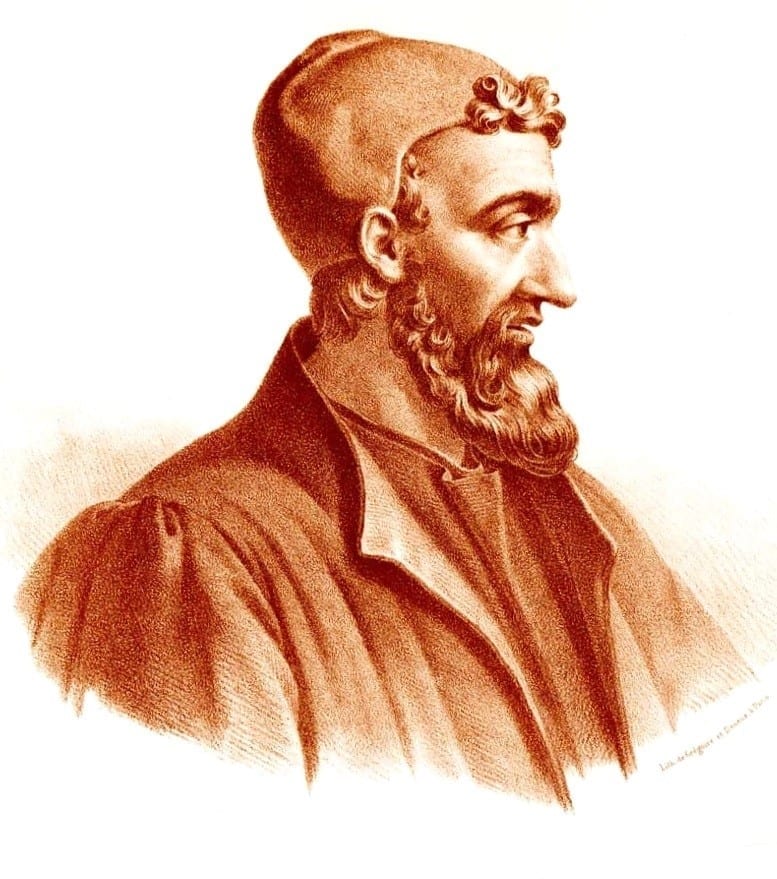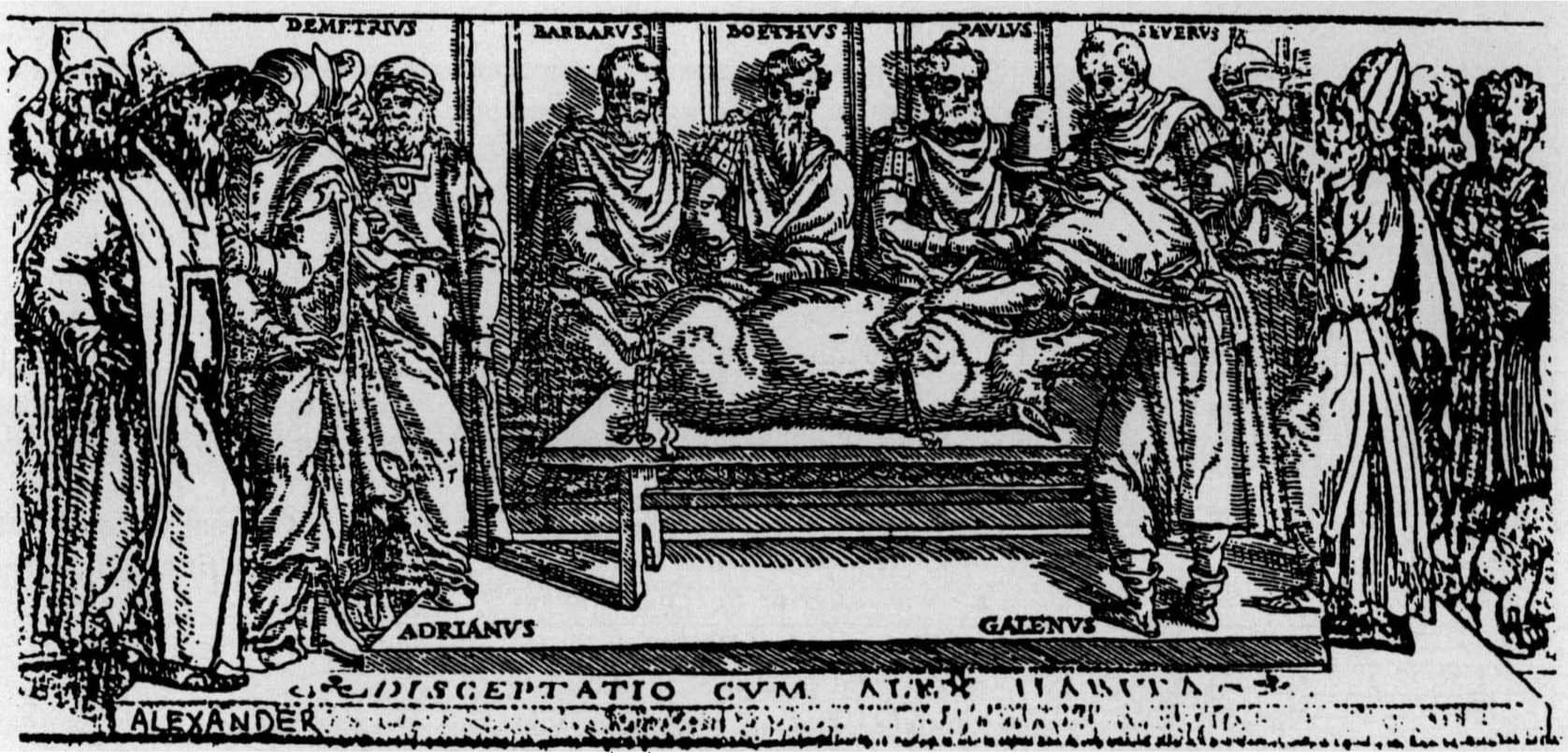Goran Štrkalj
Macquarie University, Sydney, Australia
Introduction

The year 2018 marks the eightieth anniversary of the Cayo Santiago rhesus monkey colony. This exemplary research unit epitomizes scientific excellence in experimenting on non-human primates and in using them as models to understand the biology and behavior of Homo sapiens.1 The research carried out in Cayo Santiago and similar institutions provides insights into the complexities of the scientific approach in which non-human primates provide clues for understanding humans. This approach has a long tradition in science. Indeed, the first cases of such primate studies could be traced to Antiquity, to the origins of anatomy, one of the oldest scientific disciplines. These early anatomical studies are best represented in the work of Greek physician Galen of Pergamon (Fig. 1). It has been argued that Galen’s work bears many marks of a modern scientific approach and mirrors some of the contentious issues in contemporary scholarship.
Galen, the prince of medicine
Galen (129–216/217 CE) was born into a wealthy Greek family in the city of Pergamon in the Asia Minor region of the Roman Empire.2 Thoroughly and eclectically educated, first in mathematics, then in philosophy and medicine, he exemplified a gentleman scholar who masterfully used knowledge gained from different schools of thought. In medicine, Galen vigorously applied and tested theoretical insights in many experiments, discussions with peers, and medical practice. He lectured and practiced medicine throughout the Roman Empire, treating patients from diverse backgrounds. He was physician to both gladiators and Roman emperors. The ideas of this “prince of medicine” dominated medical discourse for centuries and his work was quoted in medical treatises as late as the nineteenth century.
Macaques and human anatomy

Galen recognized the importance of anatomical study for medical practice. He pursued research in anatomy throughout his career and among over 130 preserved volumes of Galen’s writings, there are many studies devoted to anatomy, including his two probably most important works in this field, On Anatomical Procedures3 and On the Usefulness of the Parts of the Body (Fig. 2).4 These works presented both a masterful synthesis of the existing knowledge and Galen’s own insights into human anatomy. Galen’s anatomical oeuvre includes a variety of works, written for beginners as well as experts, and focusing on methods as well as on descriptions of the structure and function of the human body.
Galen emphasized that dissection was the best method to study anatomy. However, because of social and cultural constraints, dissection of human cadavers were rare in the Greco-Roman world and were practiced only briefly in Hellenistic Alexandria at the turn of the fourth and third centuries BCE. The only system Galen was able to study directly from human tissue was skeletal. Skeletons were available for study in Alexandria, one of the places where Galen studied medicine. He also opportunistically collected skeletal remains when these were available, such as when overflowing rivers washed out shallow graves. Like other anatomists in Antiquity, Galen studied different animal species for insight into human anatomy. Human soft tissue was reconstructed when animal cadavers were superimposed on human skeletons.
Galen found monkeys (apes were not known to him) to be the most similar to humans. In the absence of monkeys, pigs were taken as the next best human proxy. Galen stated that a monkey “is likest to man in viscera, muscles, arteries, veins, and nerves, as in the form of bone” and advised dissection of “tailless” monkeys “with short jaws and small canines.”3 Two primate species were most commonly studied by Galen—Macaca sylvanus (Barbary macaque) and Macaca mulatta (rhesus macaque). While, theoretically, the former fitted his ideal model for human better, the latter species was more common, smaller, and easier to catch and handle. Thus, he seems to have used rhesus macaques more often. Singer’s comparison of Macaca mulatta anatomy with Galen’s anatomical description further corroborates this conjecture.3 Rhesus macaques thus appear to be the main model for inferences on human anatomy. The study of these monkeys enabled Galen to elucidate many human anatomical structures while, at the same time, this over-reliance on primate anatomy led him to make many mistakes.

Galen’s many dissections, vivisections, and experiments were completed on rhesus monkeys and their remains. These were often carried out as public demonstrations, as animal suffering was considered acceptable at that time. This approach not only satisfied the thirst for knowledge but also the morbid curiosity of spectators. Galen’s demonstration of the function of the recurrent laryngeal nerve exemplifies this approach.3 He vivisected a pig, which would produce agonizing noise. This noise would immediately cease as Galen cut through the nerve, thus both elegantly and gruesomely demonstrating its function (Fig. 3). It is easy to criticize such an approach with a benefit of historical hindsight, but in Galen’s time, when human beings killed each other to amuse Roman citizens, this was not merely acceptable but often seen as entertaining.
As Guerrini noted, “Galen established standards, techniques and an attitude toward animal experimentation that in many ways still inform the science today. Galen emerges from his own works as a recognizable, if not necessarily an attractive personality. He forces us to confront the consequences, both good and bad, of animal research.”5
The legacy
Galen’s anatomical works were accepted as standard and rarely questioned for more than fourteen centuries. Indeed, even with the revival of dissection at Italian universities in the late thirteenth century, if a mistake was noted in Galen’s work, anatomists conjectured that humans had changed since Galen’s time, rather than admit that the master had been wrong. Bearing in mind Galen’s approach, it may be stated that the discipline of human anatomy in its early stage of development, its achievements and downfalls, were based to a considerable degree on the study of animals, especially monkeys and particularly rhesus monkeys.
With a focus on human rather than animal dissections in the late Middle Ages and Renaissance, the notice of Galen’s mistakes started to grow, resulting in Andreas Vesalius’ magnum opus The Fabric of the Human Body.6 This exceptional volume, which marks the birth of modern anatomy, was based on meticulous dissection of human cadavers and was written as a great re-write of Galenian anatomy. Curiously, as he was ending Galen’s dominance in anatomy, Vesalius himself followed Galen’s methodological dictum, “If anyone wishes to observe the works of nature, he should put his trust not in books on anatomy but in his own eyes.”4
Animals were still used as proxies to understand human structure but their importance greatly diminished. However, they still figured prominently in the study of function. William Harvey (1578–1657), for example, used many animal vivisections, primarily of dogs, to demonstrate the blood circulation.7 At the same time, some elements of the inhumane approach towards animals could be recognized in the treatment of human bodies for dissection. Disrespectful treatment of human cadavers in dissection halls and dubious ways of obtaining them continued deep into the twentieth century.8
While animals have been used as models for humans in biomedical sciences ever since Antiquity, and simplifications and ethical transgression are not common nowadays, they are still present in scientific research.8,9 Reflecting both past and present scholarly enterprises might help in better dealing with these contentious issues.
Conclusion
Galen’s work bears many commonalities with modern science and his scholarly opus is of value when reflecting on current practices in research on primates and animals in general, including issues of research ethics and methodological rigor, as well as the influence of social context and cultural values on the scientific process.
References
- Kessler MJ, Rawlins RG. A 75-year pictorial history of the Cayo Santiago rhesus monkey colony. American Journal of Primatology, 2016; 78:6–43.
- Mattern SP. The Prince of Medicine: Galen in the Roman Empire. New York: Oxford University Press, 2013.
- Galen. On Anatomical Procedures. Translated by C Singer. Oxford: Oxford University Press , 1956.
- Galen. On the Usefulness of the Parts of the Body. Translated by M Tallmadge May. Ithaca: Cornell University Press, 1968.
- Guerrini A. Experimenting with Humans and Animals: From Galen to Animal Rights. Baltimore: Johns Hopkins University Press, 2003.
- Vesalius A. The Fabric of the Human Body. Translated by DH Garrison. Basel: Karger, 2014.
- Wright T. Circulation: William Harvey’s Revolutionary Idea. New York: Oxford University Press, 2013.
- Štrkalj G. The emergence of the humanistic anatomy. Medical Teacher, 2014; 36:912-913.
- Manger P, Cort J, Ebrahim N, Goodman A, Henning J, Karolia M, Rodrigues SL, Štrkalj G.. Is 21st century neuroscience too focussed on the rat/mouse model of brain function and dysfunction? Frontiers in Neuroanatomy, 2008; 2:5.
GORAN ŠTRKALJ, PhD, is an Associate Professor at Macquarie University in Sydney, Australia, where he teaches human anatomy to health professionals and science students.

Leave a Reply